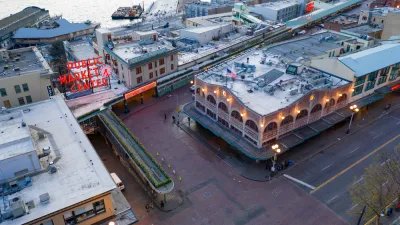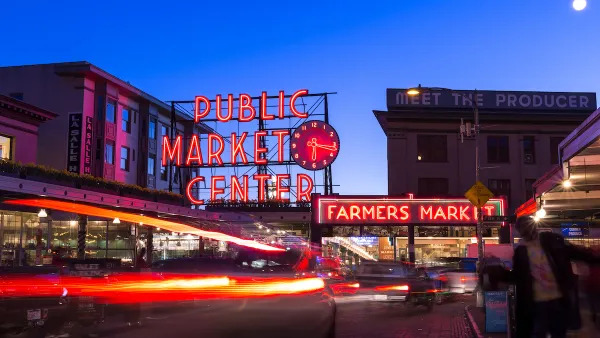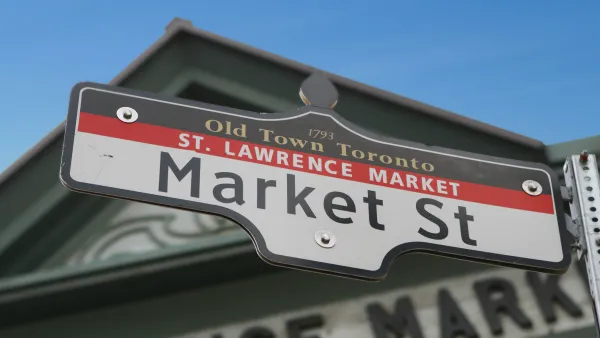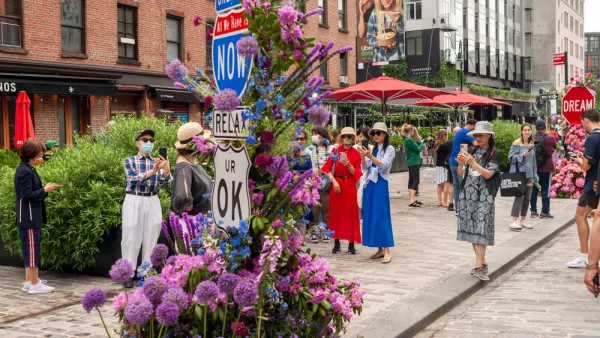It's been more than a century since the Seattle City Council decided to remove farmstands to make space for cars at the Pike Place Market. Public and political opinion is starting to see that decision as a mistake that can be reversed.

The Seattle Times Editorial Board has picked a side in one of the most heated urbanism debates to emerge from Seattle's pandemic experience: whether to block cars from accessing the streets in front of the Pike Place Market.
"City and Pike Place Market officials should make a priority of getting cars off the three blocks of Pike Place fronting the market, and the block of Pike Street that connects the market to the city," according to the editorial board.
A news article by David Kroman for The Seattle Times, published earlier in December, documents the growing public and political support for the change after the pandemic created an opening for a conversation about an idea that had previously been considered a political third rail.
Now The Seattle Times editorial board is willing to say what only the most ardent multi-modal advocates have been saying for years: it's probably not a good idea to allow cars and people to mix in one of the most visited corners of the city.
"If it was ever a good idea to allow motorists to drive through the crowds jostling along the brick street to browse market wares or stage selfies, that day has long passed. It shouldn’t take a heroic civic effort to block traffic from a minuscule fraction of downtown streets to benefit pedestrians who flock to the market by the millions each year," according to the editorial.
Any potential car-free future for the market is still a long way off, however. So far city officials with the power to expedite the car-free changes are only promising meetings—which could take a long time in a city famous for the 'Seattle Process,' which the editorial describes as "endless conversations and stalled progress."
FULL STORY: Let pedestrians enjoy Pike Place Market without cars

National Parks Layoffs Will Cause Communities to Lose Billions
Thousands of essential park workers were laid off this week, just before the busy spring break season.

Retro-silient?: America’s First “Eco-burb,” The Woodlands Turns 50
A master-planned community north of Houston offers lessons on green infrastructure and resilient design, but falls short of its founder’s lofty affordability and walkability goals.

Delivering for America Plan Will Downgrade Mail Service in at Least 49.5 Percent of Zip Codes
Republican and Democrat lawmakers criticize the plan for its disproportionate negative impact on rural communities.

Test News Post 1
This is a summary

Test News Headline 46
Test for the image on the front page.

Balancing Bombs and Butterflies: How the National Guard Protects a Rare Species
The National Guard at Fort Indiantown Gap uses GIS technology and land management strategies to balance military training with conservation efforts, ensuring the survival of the rare eastern regal fritillary butterfly.
Urban Design for Planners 1: Software Tools
This six-course series explores essential urban design concepts using open source software and equips planners with the tools they need to participate fully in the urban design process.
Planning for Universal Design
Learn the tools for implementing Universal Design in planning regulations.
EMC Planning Group, Inc.
Planetizen
Planetizen
Mpact (formerly Rail~Volution)
Great Falls Development Authority, Inc.
HUDs Office of Policy Development and Research
NYU Wagner Graduate School of Public Service





























